History of the Air Force and Air Defense of Yugoslavia. Part of 7. JNA Air Force (1980-1991)
Back in the late 1960s, the governments of Yugoslavia and Romania began exploring the possibility of jointly creating a multipurpose subsonic fighter. Such an option made it possible to divide the expenses that each of the small countries alone could not afford. According to the calculations of the army command, the air forces of both countries were going to buy about 200 similar aircraft. After the work of the joint commission, the tactical and technical requirements for the new machine were finally formed, which they planned to equip with a pair of Viper engines, since both Yugoslavia and Romania produced various versions of this TRD under license. By the middle of 1972, designers from the Yugoslav Technical Institute of the Air Force and the Romanian National Institute of Science and Technology had completed a joint project. Two prototypes began to be assembled at the same time - in Yugoslavia at the Soko company and in Romania at the Craiova plant. The fuselages with the English Martin-Baker Mk.6 ejector seat were the same on airplanes, and each side installed equipment and armament.
The production of a prototype single-seat attack aircraft in each country began in May 1972. The main order in Romania was placed at the IRAv aircraft factory (today Aerostar SA) in Bacau — the fuselage, assembly and testing of the Romanian prototype were made here; IRMA Baneasa (now Romaero SA) in Bucharest produced wings, and ICA Ghimbav-Brasov all the rest. The Yugoslav prototype was produced at the plants in Mostar (SOKO), Pancevo (UTVA) and Trstenik. The division of labor was as follows: Romania produced the front of the fuselage, the keel and additional tanks, and Yugoslavia produced the wings, the rest of the fuselage and the tail section.
As the engine was chosen two British "Rolls-Royce" "Viper" Mk 632-4IR, which were located on both sides of the fuselage. The choice was not accidental - this model was made under license in both countries: in Romania - at the Turbomecanica plant in Bucharest, and in Yugoslavia - the Orao in Railovac, near Sarajevo.
October 31 1974-th with a difference in 20 minutes both prototypes first took to the air, receiving the name "Orao" ("Eagle") in Yugoslavia (J-22 - J from jurisnik = attack aircraft) and IAR-93 index in Romania.

Double combat version of the aircraft received the designation NJ-22 Orao. The Yugoslav prototype of the two-seater took off in November 1976 of the year. One of the Yugoslav prototypes was lost in 1980, near Mostar, after a collision with a bird.
Deliveries of pre-production machines began only two years after the start of tests. This was due to the fact that it was necessary to reduce the weight of the aircraft, which on 1000 kg was more than stated.
The first Yugoslav party of pre-production cars was produced at the end of 1977 of the year and became operational at the beginning of the next year. The party consisted of 10 single IJ-22 and 5 double INJ-22. These cars later received the name "Orao" 1. They were used primarily for reconnaissance, as they did not have built-in weapons, the installation of which required radical changes in the design.

In 1980, the production of the first series of Yugoslav aircraft began, which consisted of 15 IJ-22 and three INJ-22. The first aircraft of this series took off in January 1981, after which the aircraft entered service with the Yugoslav Air Force as scouts. The first armed version of the aircraft single D-22 and double INJ-22 entered service in 1982 — 83.
The 353 division of the 97 aviation division, based at the Orthées air base, became the leader in the development of new equipment. The second was 351-iap 82-th ab at the airbase "Zerkele" in Eastern Slovenia. They were armed with aircraft modification IJ and INJ-22, which were used as reconnaissance aircraft in the interests of two assault squadrons based in the "Church".
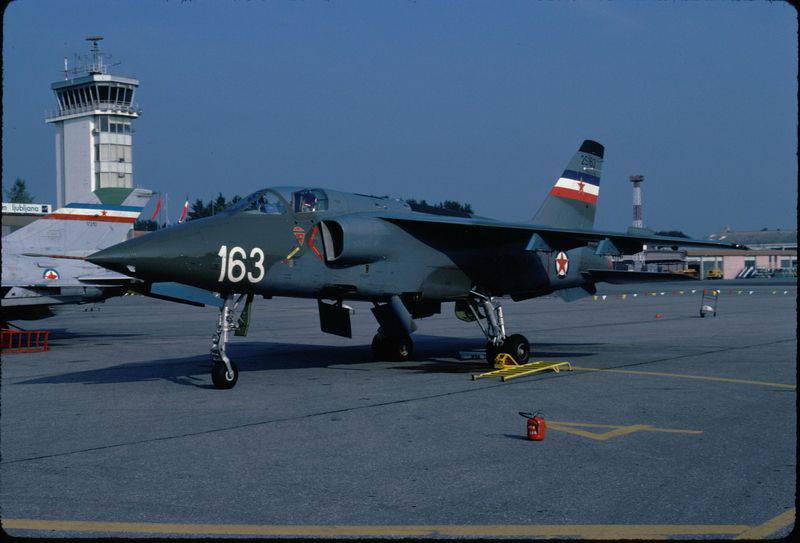
One-seat INJ-22, at the Soko aircraft factory in 1984, was converted into a marine reconnaissance INJ-22M (M from "morski" - "Marine") by installing additional equipment in the rear cockpit and hanging the container with a radar to search for marine targets. The plane made several flights at the Ortes airfield near Sarajevo, but nothing is known about its further fate.
In 1981, there was a radical modernization of the aircraft design. The fuselages and systems were changed on serial machines, in particular, the modernized Viper MK.633-7 engines (2 x 2270 kgf) were installed.
The first Yugoslav aircraft with this engine was designated SY-1 or J-22NS 20 took off on October 1983 of the year, and on November X of the following year, the test pilot passed the sound barrier on it.
Due to some engine problems, aircraft production began only in the 1986 year. The Yugoslav military assigned the name J-22 to these aircraft, while in the West the car received the designation J-22 (M) or Orao 2. A total of 43 J-22 was built.
A double version of the NJ-22 for the first time took off on July 18 1986 of the year, after which the 12 NJ-22 was built (in the West, the Orao 2D).
In addition, 8 J-22 and 6 NJ-22 were also introduced. Some sources indicate that these were airplanes modified from early IJ-22 and INJ-22, which is quite realistic, since the fuselages of the cars are identical.
The first two shock squadrons in the Yugoslav Air Force that received a new materiel were the 238-I light bombing squadron 82-th ab in the Church and 241 lbae 98-y ab at Petrovets air base (Skopje). The third squadron (242-I lbae 172-th paws) at the airbase Golubovtsy (Titograd, now Podgorica) conducted retraining on a new type.
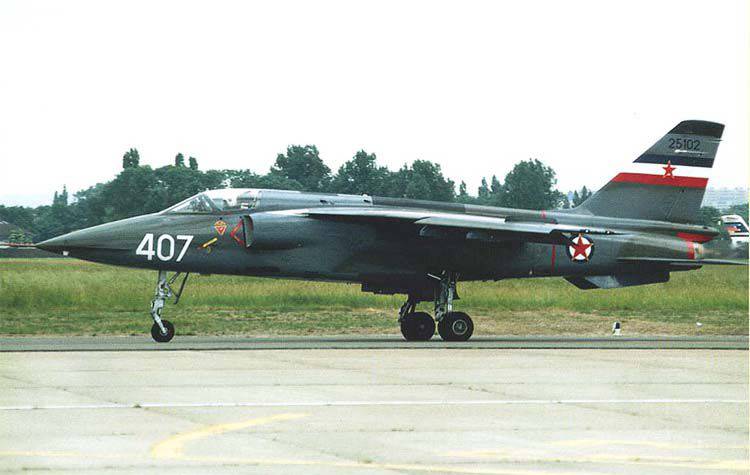
Total order was built 210-220 aircraft "Ora" of all modifications, the last car was produced in February 1992 year. The arms of the Orao aircraft include two 23-mm guns GSH-23L with 200 shells per barrel, American air-to-surface missiles AGM-65 Mayverik and Yugoslav X-66 Thunder (Yugoslav variant of the Soviet X missile -23), French Durendal concrete bombs and British cluster bombs, as well as various nationally produced weapons. The UM AGM-65B Maverick TV-guided batch was purchased by Yugoslavia in the USA in the 1980.
In 1972-1973 in France, a batch was purchased from an 21 helicopter Aerospatyal SA.341 N Gazel, later on SA.341H Partizan helicopters were manufactured under license from SOKO at the plant in Mostar (132 helicopters were built in total).
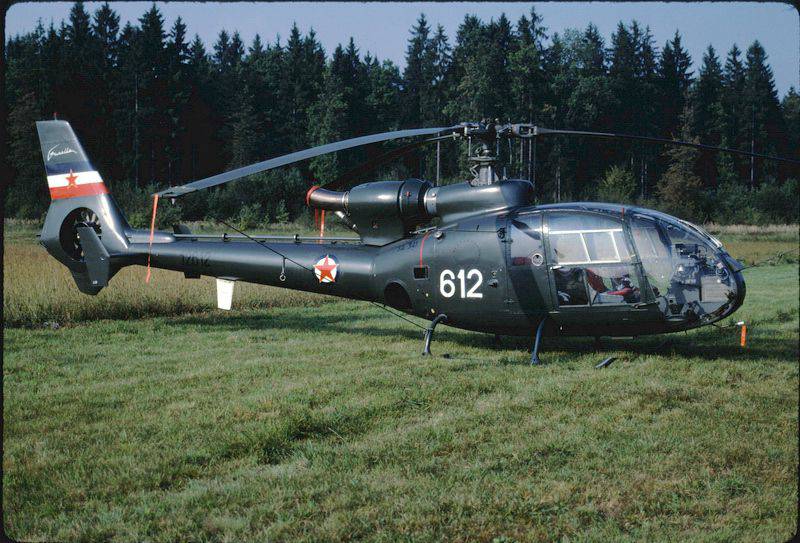
Since 1982, the plant in Mostar switched to the production of SA.342L helicopters (manufactured by 100 machines). Helicopters SA.342L were built in two versions. The helicopter fire support "Gazelle-GAMA" (Gazelle-MALjutka) was designed to combat armored vehicles and was armed with four Malyutka ATGM.
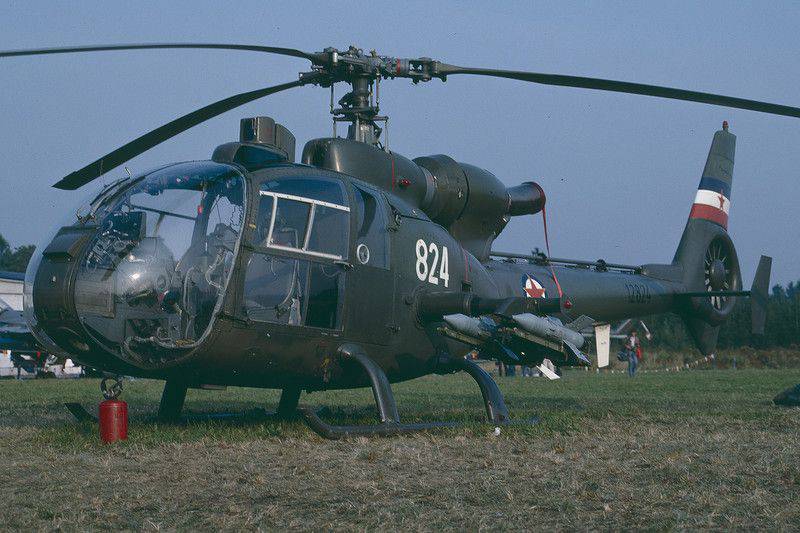
The choice for armament of the anti-tank helicopter ATGM "Malyutka" was explained by the presence of such complexes in the armament of the ground forces of the JNA (the Yugoslav People's Army) - helicopters could replenish their ammunition with army personnel. Helicopter SA.341L HERA (Helicopter-Radio) was intended to conduct reconnaissance and adjust artillery fire. Helicopter squadrons were armed with "Gazelle" of all three modifications, usually: four "Guerrillas" (old SA.341H), and 4 new "Hera" and "Gama".
Having accumulated the experience of jointly building a complex combat aircraft, Yugoslavia and Romania, while creating a new-generation multi-purpose training machine, each went their own way. Nevertheless, the Yugoslav "Super Galeb G-4" and the Romanian IAR-99 turned out to be very similar both in appearance and in characteristics. The Super Galeb G-4 was intended to replace the outdated SOKO G-2 GALEB training aircraft and J-1 JASTREB attack aircraft, significantly different from them, leaving the previous name only as a tribute to tradition. In the future, to avoid doubts about the significantly better characteristics of the new "Seagull", compared to the previous family, they were called "Super Galeb". It was quite a modern multi-purpose aircraft, able to compete with the latest Western machines of the same class - the English “Hawk” and the German-French “Alpha Jet”.
With the Viper 632-46 engine (1814 kgf thrust), the first prototype of the Quartet first took off in July of the 1978, and in December the second experimental machine joined the tests. The onboard radio electronics G-1979 includes rangefinder equipment, radio altimeter, radio compass, VHF radio communication, high-frequency omnidirectional navigation and landing system. Although this aircraft is only 4% heavier than the G-25A, its capacity is significantly higher.
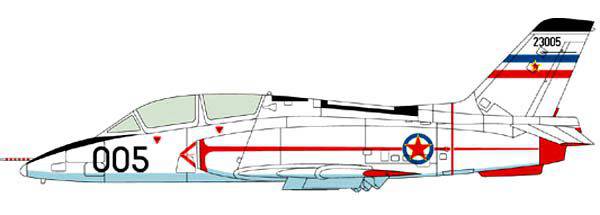
After the test program and the necessary improvements "Galeb 4" with 1982-th went into the series, being released simultaneously with the "Orao 2". They also thought about the development of a single purely combat version of the aircraft, but it did not come to release. The Air Force of Yugoslavia made a large order for these machines for SOCO, but the collapse of the country led to the cessation of aircraft production.

In total, 1989 was built before 132, of which 12 was sold to Burma.
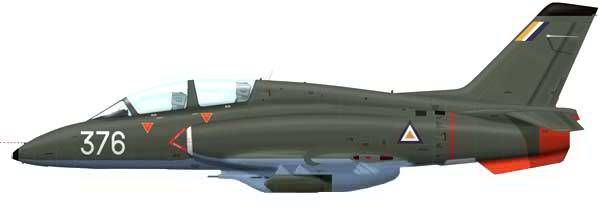
The aircraft carried the ventral container with an 23-mm gun GSH-23 (200 ammunition). On the four underwing nodes of the suspension are bombs weighing up to 500 kg, NAR. From 1990, Yugoslav specialists carried out work on the modernization of the aircraft to G-4M Super Galeb, namely the improvement of electronic navigation and control equipment weapons, systems for improving functionality in icing conditions, expanding the possibility of using weapons, including 2 SD of short-range P-60 and P-73 at the wing ends, with two air-to-surface missiles AGM-65B "Mavryk and X-23, and also CRP X-28.
At the plants of the company UTVA in April 1983, the light multi-purpose aircraft Lasta 1 (Lastochka) was developed for the purpose of teaching navigation and using weapons. The first flight of the aircraft made in September 1985 year. Structurally, it is an all-metal nizkoplan with retractable bike chassis. In January 1989, a modified version was released - Lasta 2, lighter, with a shorter fuselage and new electronics including the Ferranti ISIS D-282 fire control system.
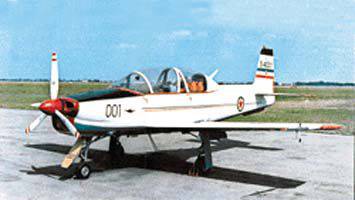
The creation of "Orao" and "Super Galeb" clearly showed the high professional level of the Yugoslav designers and the capabilities of the domestic aircraft industry. Tito’s non-aligned policy has had a positive impact on the development of its aviation industry: in 1946 - 1992 2221 aircraft of 116 different variants were built in Yugoslavia, and the share of aircraft of own production in the total number of aircraft that were in the arsenal of the Air Force during this period amounted to almost 41%.
Significant funds were invested in the construction of modern air bases capable of withstanding a nuclear strike. Such a base was the Zhelyava airfield near Bihac, the construction of which cost 7 — 12 billion US dollars. The advantages of the base are due to the location of its radar - on Mount Pleszewice, in the nervous center of the air defense system, which covered the airspace of the SFRY, and, possibly, a large territory. In addition to the well-protected radar, control center, communications and related objects, the airbase included tunnels intended for permanent basing and maintenance of three squadrons: 124 and 125 and 12NFX X, reconnaissance, equipped, respectively, MiG 352, MiG-21bis and MiG-21Р.
It was possible to get into the 3,5-kilometer tunnel system through the 4 entrances, which were closed with 100-ton air-supported doors, while three of them were intended for airplanes. In the future, it was planned to re-equip the base with machines developed by Yugoslavia under the Novi Avion program.
The tunnels were reinforced with concrete to mitigate the effects of the attack. Underground were located barracks, generators, there was access to a source of drinking water and other facilities and resources needed in wartime. The air base canteen was designed for simultaneous service for up to 1000 people; reserves of fuel, fuel and ammunition allowed the base to operate autonomously for up to 30 days. Fuel was supplied through the 20-kilometer network of underground pipelines from the warehouse near Bihac.
On the surface of the object are 5 runway. The complex was directly defended from the air - numerous air defense systems (Kub and others), from the ground - motorized infantry and military police. Access to the base was strictly regulated, up to the opening of fire on the approaching without the appropriate permission.
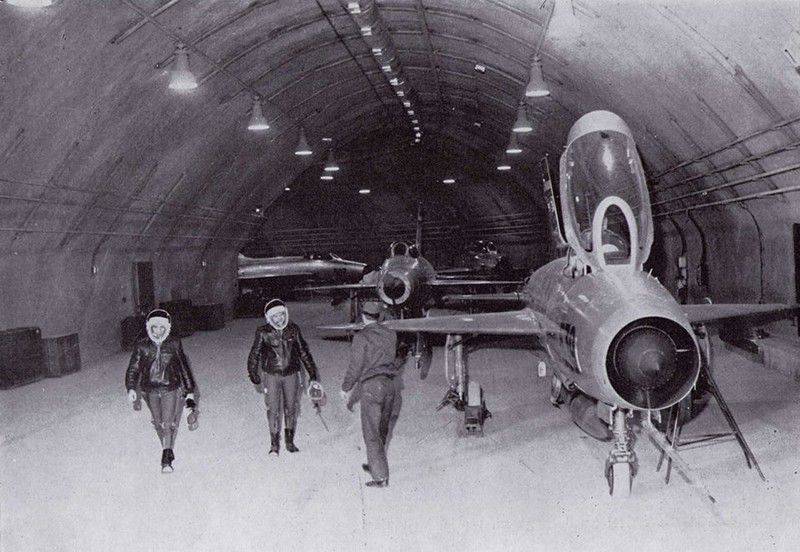
Yugoslavia among the non-aligned countries was not only a leader in the field of aircraft manufacturing, but also in the field of military training. Hundreds of pilots from Africa and Asia have been trained here.
In the field of technical equipment, the Air Force and Air Defense of Yugoslavia reached their peak in the 80s, when the most advanced MiG-29 fighters (MiG-29 and later 25 years remained in service with the Air Force and Serbian air defense of Serbia), Ka-28 helicopters (the most difficult on the composition of the aircraft avionics, ever in service in Yugoslavia), radar western production S-600, AN / TPS-70, etc.
Yugoslavia became the first European country to receive MiG-29 fighter jets. In 1986, a contract was signed for the supply of 14 fighters MiG-29 and two fleets MiG-29UB.

MiG-29 fighters entered service with the Yugoslav Air Force in 1989 under the designation L-18.
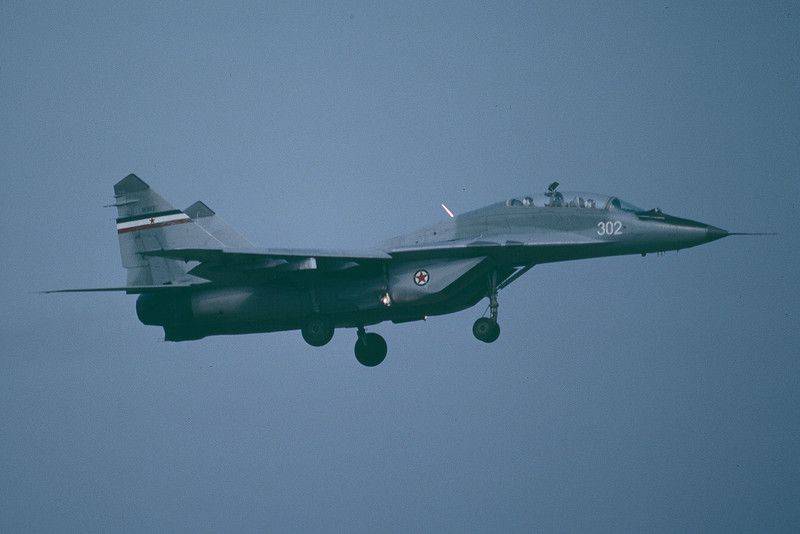
The first aircraft overtook from Lukhovits to the Balkans in October 1989. For the first time, the Yugoslav MiGs were publicly shown at the airbase 15 in May 1988 of the MiG-29 entered the 127 squadron of the 204 iap. The purchase of a fairly limited number of MiG-29-s was explained precisely by the high hopes that the Air Force command assigned to Novi Avion. Novi Avion was also known under its own name Sloboda (freedom). It was assumed that the MiG-29 fighter would become a “temporary” type, designed to close the gap before the 1990s planned for the middle. Adoption of the "Sloboda" fighter of Yugoslavia’s own air force. In the media there was information that Yugoslavia was going to buy more 16 MiG-29 fighters, but the delivery of the second batch of aircraft was prevented by the collapse of the SFRY.
Yugoslavia could become the first country outside the USSR to which the Su-1989 fighter jets would be armed in 27 year. Unfortunately, the leadership of the country's air force and personally General Anton Tus decided that the Su-27 is too big for such a small country as the SFRY. It was decided that the MiG-29B, when prompted from the ground, could be the best answer to NATO fighters.
Novi Avion (New Aircraft) began to be developed in Yugoslavia at the end of the 70- years of the twentieth century and was a supersonic multi-purpose jet aircraft (planned to be released in versions of interceptor, fighter-bomber and reconnaissance) of the 4 generation. The first flight was conceived on the 1992 year, and mass production was to begin in the middle of the 90's. The project has long appeared in the press and documents under various names: Novi Avion, Nadzvucni Avion (Supersonic Aircraft), Yu-supersonic, YU-avion, Yu-82, Supersonicni borbeni avion (supersonic combat aircraft), Yu-visenamenski borbeni avion (multi-purpose combat aircraft). Officially, the program for its creation was announced in 1986 in Brnik.
At the beginning of this program, like many in Yugoslavia, stood Josip Broz Tito, who in 1974, after the flight of the first prototype of the Orao plane, stated that Yugoslavia also needed to have a supersonic aircraft. In May 1977, the Aviation Technical Institute received an official assignment to begin designing this machine.
According to the documents, the aircraft was to be built according to the “duck” scheme with active control, built using modern composite materials and have one engine that provides increased lifting force. Equipped with a multi-purpose radar and an integrated navigation system, the cockpit is equipped with digital indicators and high automation. The aircraft’s armament was to consist of a double-barreled 30-mm caliber cannon with 300 projectiles, medium-range air-to-air missiles and air-to-ground missiles with the possibility of hanging bombs and containers with reconnaissance equipment and electronic warfare weighing up to 5000 kg on five suspension points.
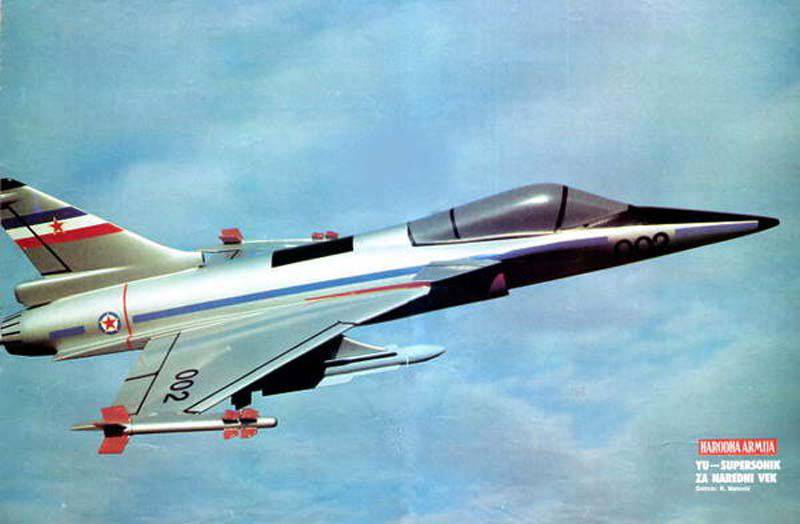
In the middle of the 80-ies, the magazine Aviation Week and Space Technology called the development program for the Yugoslav supersonic fighter one of the most ambitious projects in the world military stories. But there were difficulties with the power plant (there were installation options for British and French engines), followed by financial difficulties, in the 1990 year, the assembly of the first prototype was started. But the collapse of the country, war and sanctions put an end to the project. In 1991, it was finally collapsed, and the Aviation Technical Institute was closed.
Settlement performance characteristics: crew - 1 man, length - 13,75 m, height - 4,87 m, wing span - 8,5 m, empty weight - 6247 kg, maximum take-off weight - 13500 kg, engine thrust - 8500 kg, maximum speed - 2000 km / h , ceiling - 17000 m, distillation range - 3765 km, range - 465 km, armament: 1 30-mm gun (300 shells), various weapons at 11-suspension points.
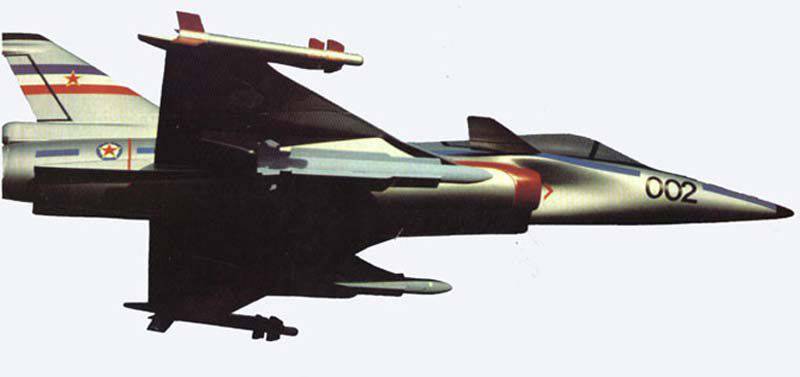
One of the six Yak-40 purchased in the USSR in the 1970-s, was converted by the Yugoslavs into an EW aircraft.
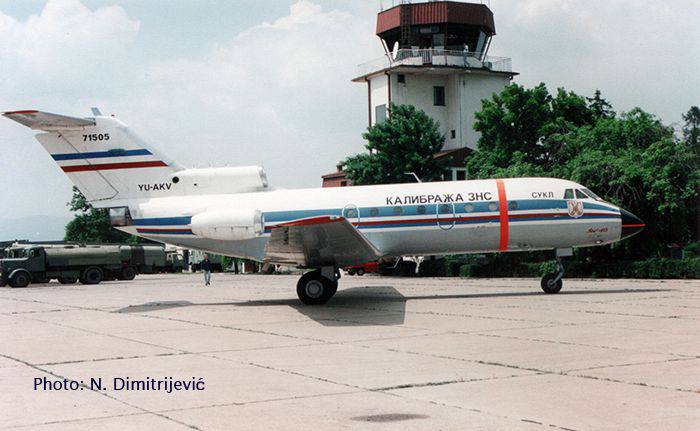 [/ Center]
[/ Center]Aviation fleet was represented by deck-based helicopters Ka-28 - 2 units and Ka-25BSh - 6 units. And also the Mi-14PL amphibious helicopter - 4 units. Helicopters Ka-25PL were received from the USSR on November 22, 1974 and were based at Divule Air Force Base near Split (Croatia). Cars received the Yugoslav name HP-43 (helicopter
counterstrips-43).
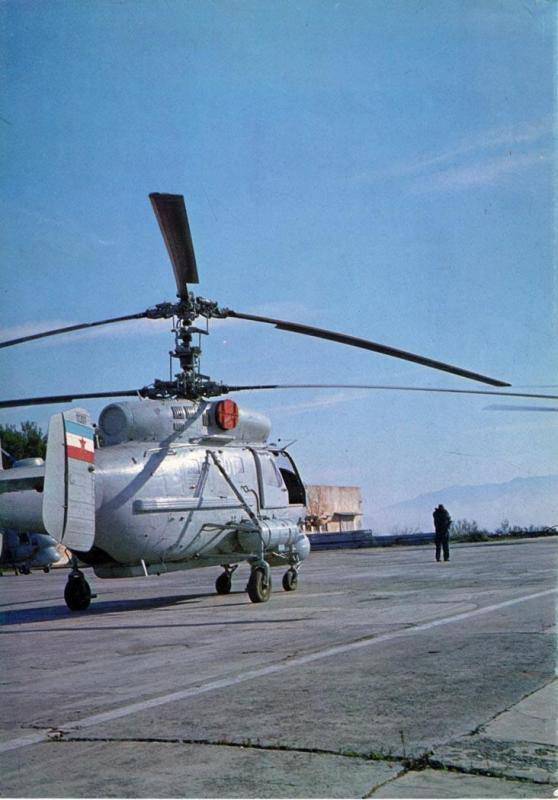
In 1980- 1982. The 784 th anti-submarine helicopter squadron received four Mi-14PL helicopters (the Yugoslav designation of the KP-44 helicopters, Helicopter counter-marines-44).
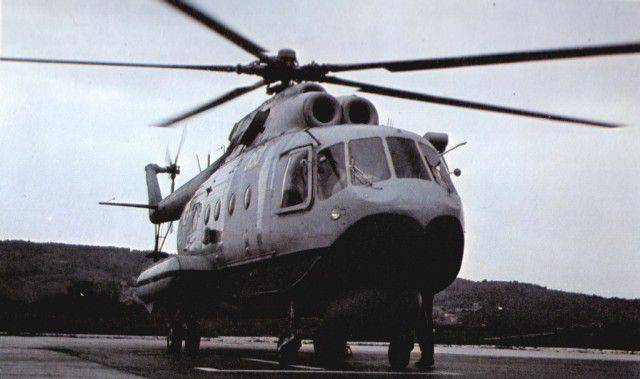
Mi-14PL supplemented the already existing Ka-25PL helicopters. Pilots were trained according to Soviet instructions, the practical training of the crews of the Mi-14PL took place in Kacha near Sevastopol on the basis of the 872 antisubmarine aviation regiment of the USSR Navy. In 1987, X-NUMX Ka-2 helicopters (export version Ka-28) were obtained for the frigates under construction.
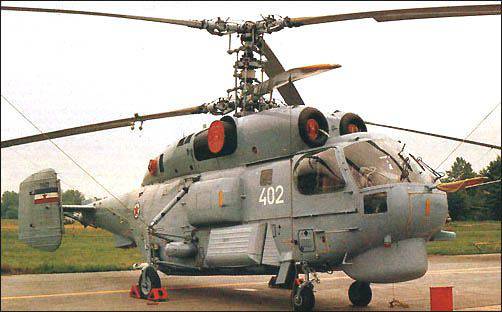
Initially, the 784 Squadron was stationed at the hydrobase Divulje (Croatia). In addition to the fight against submarines, the crews worked out the inspection of sea areas using radar and guidance fighter-bomber aircraft on surface targets. During the exercise, Mi-14PL and Ka-28 helicopters (entered the squadron in 1987) were used as mini-AWACS, passing information to the crew of the Orao and Hawk fighter-bombers. In December, 1987 was one Mi-XNUMHPL became involved in a tragic incident that occurred at the hydro. After repairing the equipment, the pedals were incorrectly connected. The helicopter fell, not really looking up from the ground. The pilots did not even get injuries, but the blade of the main rotor was mortally wounded by the soldiers who were near the place of emergency landing. The standard armament of the Mi-14PL helicopters was the American torpedoes Mk.14.
In 1980-s. In Yugoslavia, work began on creating its own multipurpose helicopter weighing about 9 tons - VNH-90 (Vise Namjenski Helicopter, a multi-purpose helicopter 90-s). The helicopter VNH-90 was intended to replace the Mi-8. On serial helicopters it was planned to put TM-1500 engines with 1500 kW power, on the prototype - Turbomeca Makila TVD with 1130 kW power. The helicopter with a four-bladed rotor was designed to carry 24 soldiers or 20 passengers in the civilian version, or 12 patients on stretchers in the sanitary version at a speed of 280 km / h. The avionics was planned to perform with the latest electronic technology based on Western technologies. The helicopter was supposed to be easy to maintain and relatively inexpensive. For the military version, the presence of the cockpit armor, the armament of the ATGM of a new generation was specified. Based on the base model, it was planned to develop an anti-submarine modification and an ARLO helicopter. The industry of Yugoslavia did not have the experience of developing middle class helicopters, which is why the design progressed very slowly. Therefore, in parallel with the design of the VNH-90, the possibility of licensed production of foreign-made helicopters, primarily Western European Aerospatials of AS / 332 Mk 2, Westland W-30 Super Links and American Bell 214ST, was studied, subject to adaptation by Yugoslavia. Within the framework of this plan, 5-7 in March 1984, the French held a presentation of the AS.332M “Super Puma” helicopter for the command of the JNA and representatives of research organizations in Belgrade. The French carried out ten flights, demonstrating the high rate of climb of the helicopter and its ability to perform steep turns. Finally, the work of the automatic approach system was demonstrated. The Super Puma was rated as a modern multi-purpose helicopter, but it took three years to organize its production in the SFRY, and the military wanted a more efficient machine.
Thus, in the field of technical equipment of the Air Force and Air Defense of Yugoslavia reached their peak in the 80-ies, when the most advanced MiG-29 fighter jets (MiG-29 and later 25 years remained in service with the Air Force and Serbian air defense), the Ka-28 helicopters ( the most sophisticated airborne avionics of the aircraft, which ever was in service in Yugoslavia), the western-made radar S-600, AN / TPS-70, etc.
In the eighties, the 18 air defense missile system 9K35 "Strela 10"
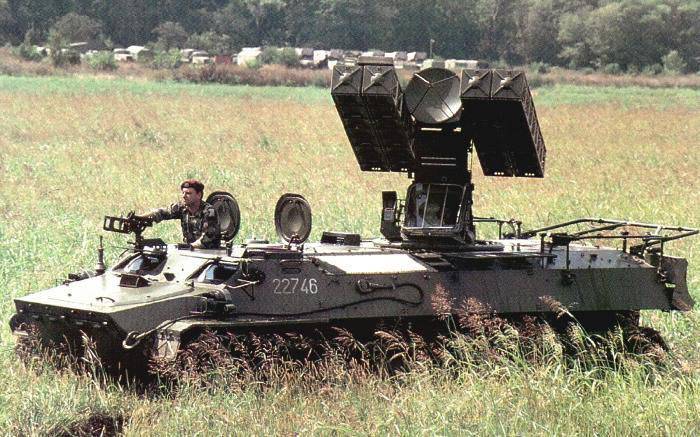
Moreover, the Yugoslavs liked the air defense system so much that they put it on the base of their BMP M-80A, under the designation SAVA
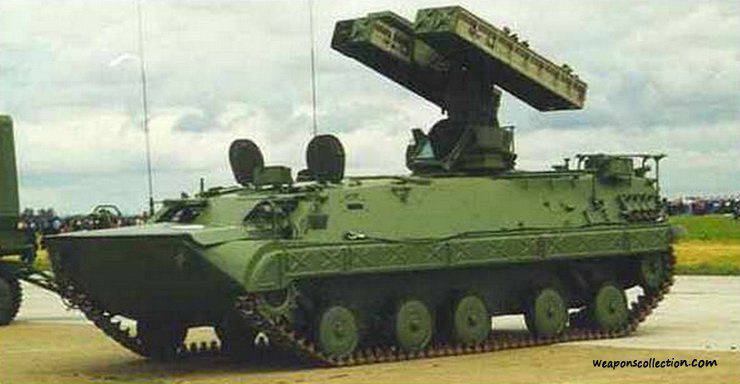
Swedish 40-mm automatic Bofors L / 70 with radar guidance.
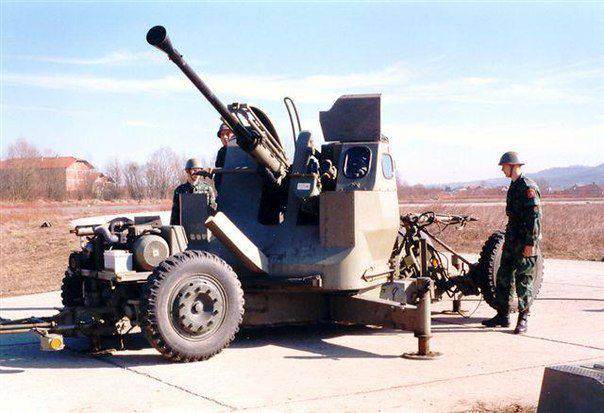
Based on the 20-mm Ispano-Suiza M55 A4B1 anti-aircraft cannon and the BOV Yugoslav wheeled armored vehicle, the BOV-3 ZSU was created. A significant disadvantage of the ZSU was the lack of radar and the placement of stores on 60 shells, each on top of the guns, making it impossible to reload them from the inside impossible.
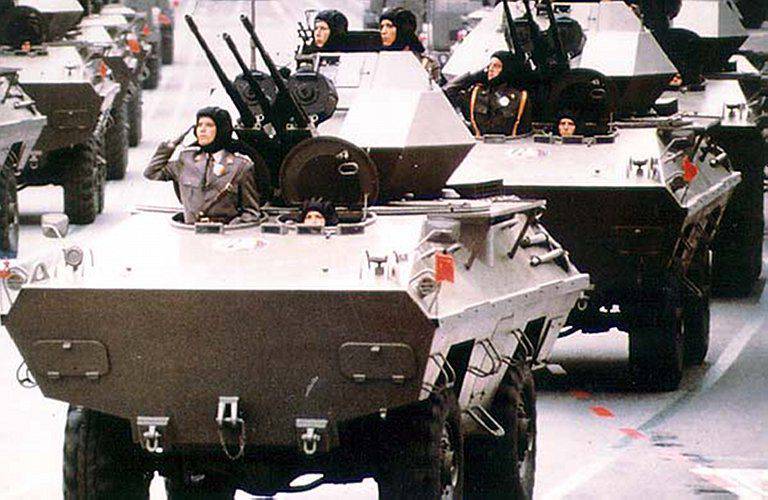
On the basis of BOV-3 was created ZSU BOV-30 double mounted 30-mm gun. However, it did not go into mass production, only a few copies were produced.
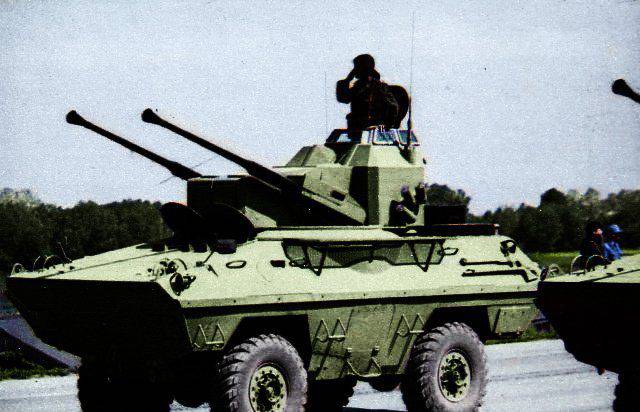
At the end of the 80-ies began a deep modernization of the Air Force. Planned for adoption by the 4 th generation fighter of its own design and multi-purpose medium helicopter - also its own design. In the first half of the 90-s it was supposed to buy the Soviet C-300, the Mi-24 and Mi-26 helicopters, an additional number of MiG-29 fighters, but all these plans were thwarted by civil war. All in all, by the end of 90, it was planned that the 300 troops would receive new aircraft of their own production: 120 J-22 Orao, 30 G-4 Super Galeb, 150 of promising Novi Avion aircraft.
Own aviation had the Ministry of the Interior of Yugoslavia. The first helicopter appeared in the police in January 1967. It was the AB.47J-2A bought in Italy.
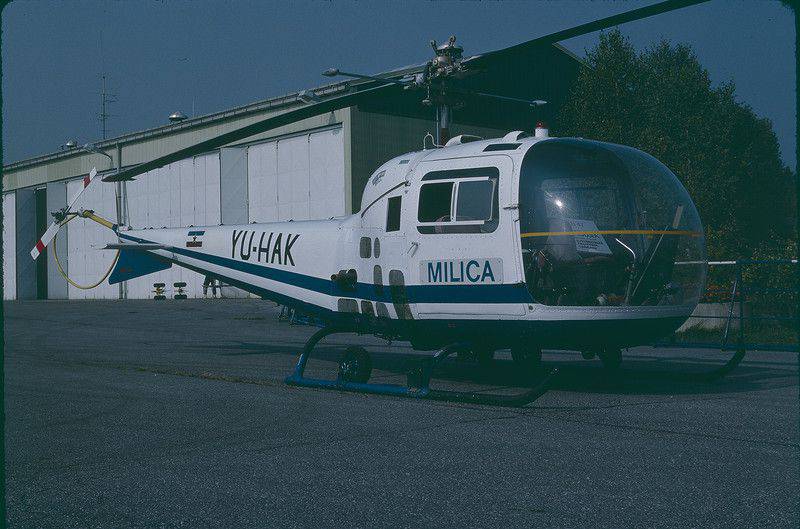
At the beginning of the 1970's in Italy they bought three AV.206 "Jet Ranger I", in 1976 - one "Jet Ranger II", at the end of 1970's. - Six Bell 206В and three Bell 206L-1 helicopters arrived from the USA.
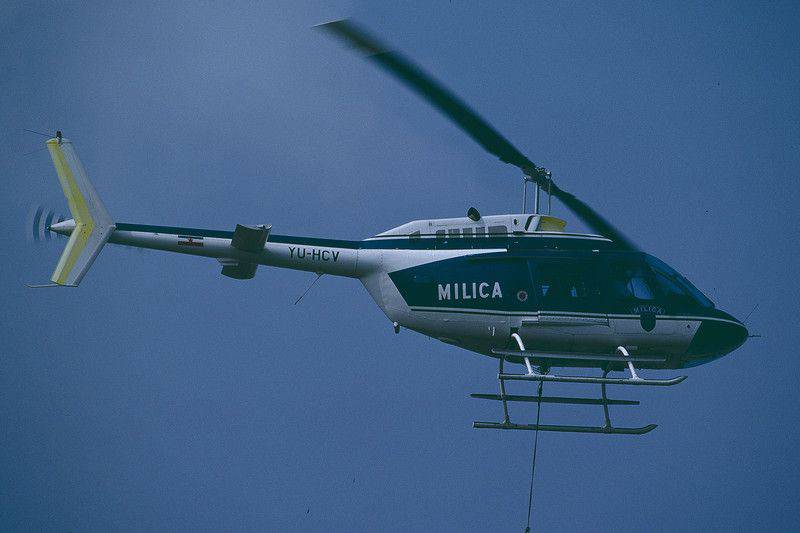
Also the helicopter fleet of the Ministry of Internal Affairs was replenished with three “Gazelles”. Helicopters were used in the traditional "police and police" manner: traffic control, security during mass events, etc. However, at the end of 1970's. An anti-terrorism unit was created within the Ministry of Internal Affairs, in the interests of which AV.212 helicopters purchased from Italy were operating.
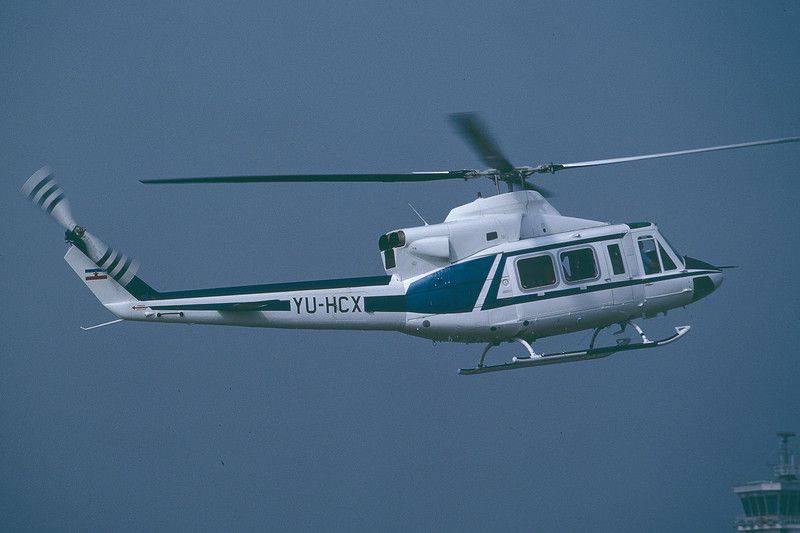
At the end of 1980's all the helicopters of the Ministry of Internal Affairs were consolidated into the 135 helicopter squadron, which was based in Belgrade Airport. Police helicopters had a white-blue, civilian, coloring. In May, 1991 was formed by the helicopter squadron of the security service, and the federal police squadron was disbanded.
Information